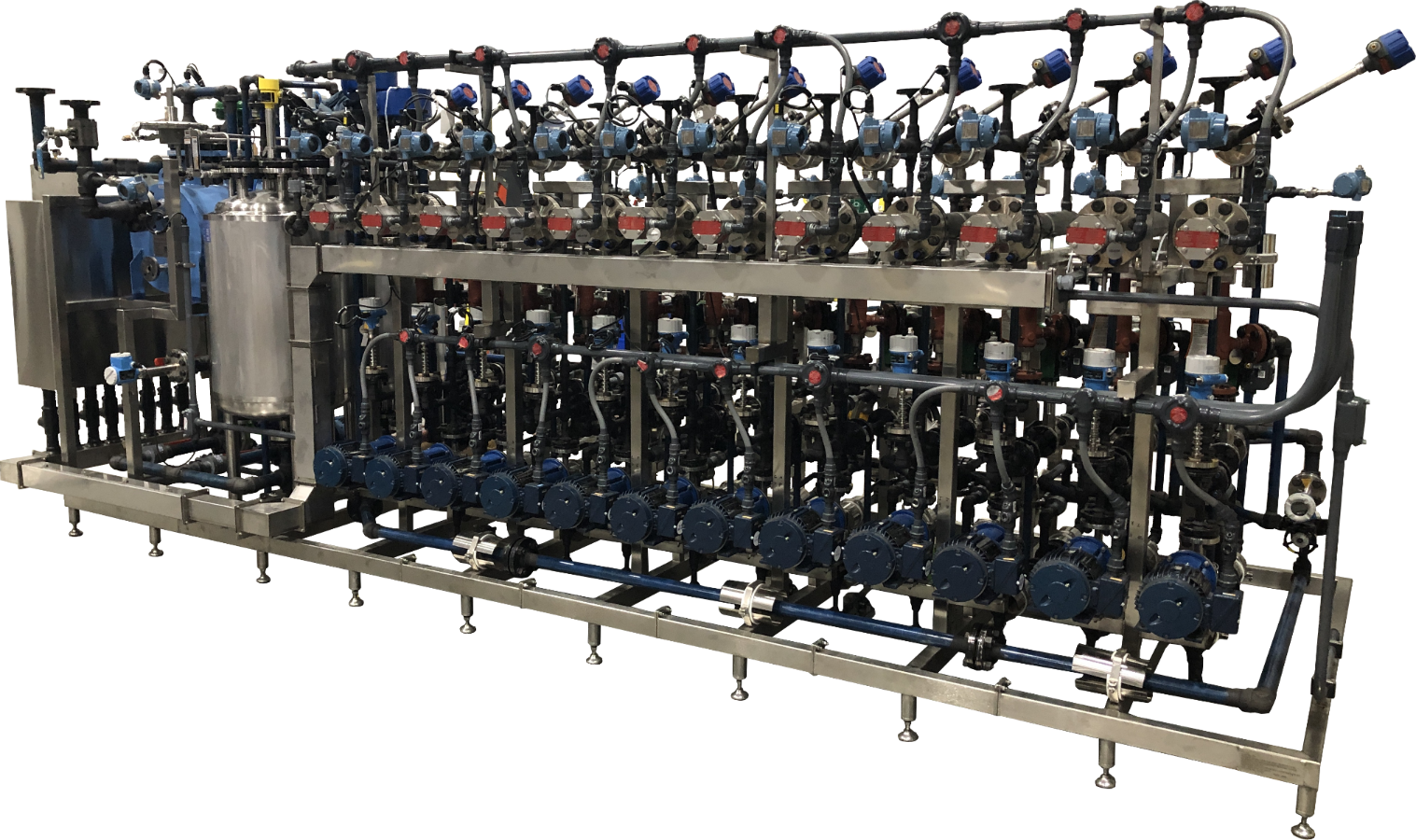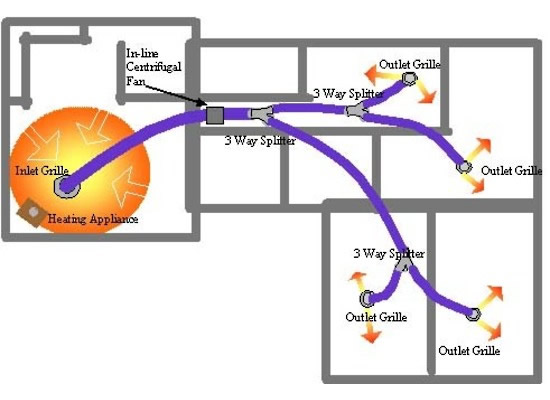DVS Heat Transfer Systems: The Future of Energy-Efficient Industrial Heating Solutions
The Duty of Heat Transfer Systems in Sustainable Energy Solutions for the Future
Heat transfer systems are necessary in the pursuit for sustainable power remedies. They optimize thermal power management, boosting the performance of eco-friendly innovations. By employing devices like conduction, convection, and radiation, these systems lessen energy losses. Their duty in solar thermal and geothermal applications is specifically considerable. As technologies emerge, the capacity for additional advancements raises crucial concerns about future energy strategies. What developments will shape the landscape of lasting energy?
Comprehending Heat Transfer Solutions

The Significance of Thermal Power Management
Efficient thermal energy management is crucial for making best use of power efficiency and decreasing waste in different systems. By controling temperature and enhancing Heat transfer procedures, companies can considerably minimize energy intake and functional costs. Efficient monitoring entails the implementation of innovative technologies and practices that keep an eye on and control thermal problems within systems, making sure that power sources are utilized efficiently. In addition, appropriate thermal power administration adds to reducing greenhouse gas emissions, straightening with worldwide sustainability objectives. It likewise boosts system dependability and performance, bring about boosted item top quality and longer devices lifespan. Inevitably, focusing on thermal energy monitoring is a crucial action in the direction of developing much more sustainable power options and fostering a liable technique to power usage in commercial and residential contexts.
Applications of Heat Transfer in Renewable Resource
While different renewable energy resources assure sustainability, the efficient application of Heat transfer plays a crucial role in their efficiency. In wind power systems, Heat transfer is used for wind turbine component air conditioning, enhancing performance and durability. Geothermal power depends on effective Heat exchange in between the planet's subsurface and the fluid circulating in the system, making best use of power extraction. Biomass energy processes additionally take advantage of Heat transfer, as it helps in transforming organic materials right into useful gas via pyrolysis and gasification. In addition, in hydropower, keeping excellent temperatures in tanks can enhance energy outcome. Each of these applications demonstrates the vital relevance of Heat transfer systems in boosting renewable resource technologies, inevitably adding to a much more sustainable energy future.
Enhancing Solar Thermal Power Performance
As solar thermal power systems remain to evolve, improving their effectiveness has actually become crucial for optimizing power output. Advancements in Heat transfer modern technologies, such as improved thermal storage products and cutting-edge Heat exchangers, play a significant function in enhancing efficiency. By utilizing advanced products that have premium thermal conductivity, systems can move and capture Heat better. Furthermore, integrating monitoring systems that follow the sun's course guarantees that collection agencies receive suitable solar exposure throughout the day. Using nanotechnology in solar absorbers can better enhance power absorption prices. Incorporating automatic control systems helps handle and manage temperatures power distribution successfully, leading to reduced losses and enhanced overall system efficiency. These enhancements lead the way for more sustainable solar thermal energy solutions in the future.
Geothermal Home Heating: A Sustainable Service
Geothermal home heating offers a viable alternative for lasting power, providing considerable environmental advantages through minimized greenhouse gas discharges. Its effectiveness and cost-effectiveness make it an attractive choice to typical heating unit. Challenges connected to application must be resolved to optimize its potential effect.
Environmental Advantages of Geothermal
Although typical heating approaches add considerably to greenhouse gas exhausts, geothermal heating presents a compelling alternative that reduces environmental influence. By utilizing the Earth's interior Heat, geothermal systems use a renewable resource resource, substantially decreasing dependence on nonrenewable fuel sources. This approach produces marginal carbon emissions, making it a cleaner alternative for industrial and property heating. In addition, geothermal systems promote power performance, as they require less energy contrasted to standard heating systems. DVS Heat Transfer Systems. The application of geothermal energy additionally aids in reducing air contamination, improving regional air high quality and public health. As a lasting option, geothermal heating supports climate modification mitigation efforts, placing itself as a crucial component in the shift towards a greener future
Effectiveness and Cost-Effectiveness
Just how does geothermal home heating determine up in terms of effectiveness and cost-effectiveness contrasted to traditional heater? Geothermal heating shows exceptional effectiveness, frequently attaining a coefficient of performance (POLICE OFFICER) of 3 to 5, implying it produces 3 to five units of Heat for every device of electrical energy taken in. This performance equates right into reduced operating expense, specifically in regions with stable geothermal resources. First installation costs can be greater than traditional systems; nevertheless, lasting financial savings on power costs and lowered upkeep expenditures can balance out these in advance investments. In addition, many federal governments incentivize geothermal systems with rebates and tax credits, improving their cost-effectiveness. On the whole, geothermal heating becomes a lasting and financially practical alternative to even more standard heating solutions.
Application Obstacles and Solutions
Numerous obstacles can hinder the extensive implementation of geothermal heating systems, regardless of their clear advantages as a lasting energy service. High preliminary installment expenses often prevent property owners and investors, making financing a substantial barrier. In addition, the geographical restrictions of ideal geothermal sites limit access in specific areas. Regional laws and allowing processes can also complicate project development, causing hold-ups. Public awareness and understanding of geothermal systems continue to be low, preventing acceptance. To resolve these difficulties, targeted education projects can enhance open secret, while government motivations might alleviate economic check out this site worries. Collaborating with local authorities to streamline policies may facilitate smoother project approvals, eventually promoting the fostering of geothermal heating as a sensible, sustainable energy option.
Developments in Heat Transfer Technologies
Technologies in Heat transfer technologies play an essential role in improving energy effectiveness and sustainability. Advanced Heat exchangers and phase modification products are at the center of these advancements, supplying significant renovations in thermal administration. These modern technologies not just maximize discover here power use however additionally add to minimizing environmental impact in numerous applications.
Advanced Heat Exchangers
Advanced Heat exchangers play a crucial function in improving power efficiency throughout various applications in sustainable power options. These tools help with the transfer of Heat in between 2 or even more fluids, noticeably decreasing power usage in processes such as commercial home heating, cooling, and power generation. Technologies in products and style, such as the use of nanofluids and portable arrangements, have caused improved thermal performance and minimized dimension demands. Furthermore, developments in electronic monitoring and control systems enable enhanced operation, more raising effectiveness. By decreasing waste Heat and maximizing energy recovery, advanced Heat exchangers add to reduce carbon footprints and support the shift toward environmentally friendly modern technologies. Their continued growth is essential for achieving international power sustainability goals.
Stage Modification Products
The integration of stage modification materials (PCMs) right into Heat transfer modern technologies stands for a substantial innovation in energy administration and effectiveness. PCMs take in and release thermal energy throughout their phase adjustments, allowing reliable temperature level regulation in structure products and power systems. By keeping excess Heat during top periods and releasing it when demand boosts, PCMs add to fill changing and power conservation - DVS Heat Transfer Systems. This ability enhances the performance of renewable resource systems, especially in solar thermal applications. Additionally, PCMs can boost the thermal convenience of indoor settings, reducing reliance on conventional home heating and cooling down approaches. As advancements in PCM formulas continue to arise, their duty in lasting power options is poised to grow, offering appealing methods for future study and application

Future Prospects for Heat Transfer in Lasting Energy
As the demand for lasting energy options proceeds to rise, the function of Heat transfer systems is coming to be progressively important fit future technologies. Technologies in styles and products are anticipated to improve performance in Heat transfer, decreasing power losses in different applications. The integration of sophisticated thermal storage space systems, such as stage modification materials and thermochemical storage, will make it possible for better monitoring of energy sources. Study into nanofluids and biomimetic Heat exchangers might additionally maximize thermal performance. The adoption of clever modern technologies will allow for real-time monitoring and adaptive control of Heat transfer processes. These improvements are poised to substantially add to this content the overall efficiency and sustainability of power systems, leading the way for a more energy-efficient future.
Regularly Asked Inquiries
Exactly How Can People Execute Heat Transfer Solution in your home?

People can implement Heat transfer systems at home by mounting energy-efficient devices, utilizing radiant heating, and enhancing insulation. These procedures improve energy efficiency, lower prices, and advertise sustainable methods in residential environments.

What Are the Expenses Connected With Mounting Heat Transfer Systems?
The costs connected with setting up Heat transfer systems differ extensively, typically incorporating devices, installment labor, and upkeep. Factors such as system type, home size, and neighborhood guidelines greatly affect the total expense included.
Are There Government Rewards for Heat Transfer System Installations?
Federal government motivations for Heat transfer system installments vary by area and can include tax obligation rebates, credit scores, and grants. These economic benefits intend to encourage adoption, eventually promoting energy effectiveness and lowering ecological influence within neighborhoods.
How Do Heat Transfer Equipments Effect Power Expenses?
Heat transfer systems especially affect energy expenses by maximizing energy efficiency. By enhancing the transfer of Heat, these systems minimize power usage, causing lower utility costs and producing an extra lasting approach to power administration.
What Upkeep Is Required for Heat Transfer Solutions?
Maintenance for Heat transfer systems includes regular assessments, cleansing of parts, inspecting fluid levels, making certain correct insulation, and changing used parts. These jobs aid preserve effectiveness, avoid failures, and extend the system's operational lifespan.
These systems assist in the motion of thermal energy from one tool to one more, allowing the transfer of Heat for heating, cooling, or energy generation functions. Geothermal energy relies on efficient Heat exchange between the planet's subsurface and the liquid flowing in the system, making best use of energy extraction. Furthermore, geothermal systems advertise energy effectiveness, as they require less power contrasted to traditional heating systems. Advanced Heat exchangers play an essential role in enhancing energy performance across different applications in lasting power options. Heat transfer systems notably influence power expenses by enhancing energy efficiency.